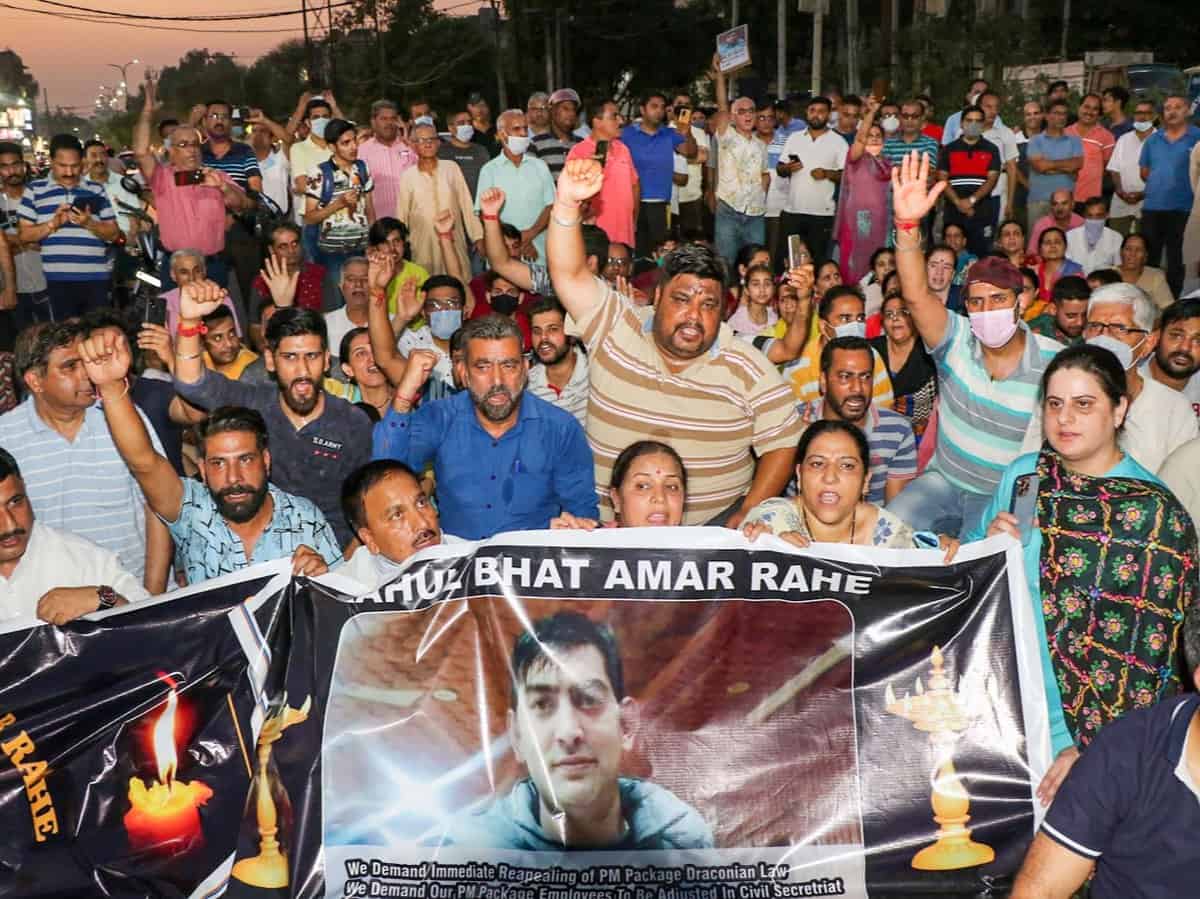

The killing of a Kashmiri Pandit employee Rahul Bhat in the central Kashmir district of Budgam on Thursday has been condemned and condoled like all other such killings in the past, but there is something more to this gruesome murder – it brings a bad name to Kashmir, as it triggers a parochial narrative that Kashmiri Hindus were the only targets in the Muslim majority Valley. There always is an extra concern when a minority community member is shot dead by the terrorists. In the case of Kashmiri Pandits’ killing in the Valley, it is immediately traced to their mass exodus in 1990 when they had to flee their homes amidst the fear of bullets killing them and a hostile ecosystem that came into being in the initial days of the eruption of militancy in Kashmir. The past is relived every time a Kashmiri Pandit is killed in the Valley, the echoes of 1990 reverberate.
While all this was there, the spin doctors were ready with all their toxic formula of playing the Muslim- versus Hindu card, Kashmiri Muslims came out in open, took out processions condemning the gruesome murder, and made it plain that they won’t allow 1990 to be repeated. This should have been a more assuring message to the Kashmiri Pandit community in the Valley, whether they are serving in government offices under PM’s Rehabilitation and Employment Package, or those who stayed back in the land defying all the calls to migrate – than the official pledges that the culprits would be brought to justice.
An act of terror is an act of terror. There have been numerous instances where local Muslims- employees, policemen, social activists, shopkeepers, and daily wage earners- have been killed by militants. That is condemned as an act of terror but no other motives are attributed as it is believed that terrorists have to kill, so they kill. But when it comes to the minorities, especially Hindus and Sikhs, the narrative shifts from acts of terror to communal overtones.
Indeed, the killing of a member of the minority community has its own tragedy and ramifications, but the larger issue that the Muslim majority Kashmir should be aware of, such killings have wider pitfalls.
At this point in time, when the tourists are in the Valley in thousands, enjoying its enchanting beauty and cool climes, these killings don’t do any good to the image of the place. The killings and fear go together and this can cast a shadow over the overall atmosphere in the Valley that is expecting not only more tourists but also an investment for its economic development. The fear leads to a rethink.
Of course, there are ripple-effects. Twists are given to make it look like the whole thing is communal. This widens gaps. This way, they are falling into the trap of the killers, and also their backers whether within or from across the border-Pakistan Ridicule is no solution to such situations.
The acts of terror and the hands behind such obnoxious and inhuman acts should be separated from the polity. Defaming the Valley will have its own consequences. The country’s leadership hails Kashmir as “crown jewel of India” that honour should be respected in letter and spirit. But the defamation of the Valley because acts of terror take place there is one thing, but to link these acts of terror to the majority community is quite dangerous. It is a deliberate attempt to draw wedges between the communities, not only within Jammu and Kashmir but also at the national level.
Who would benefit from such vicious narration – a place which is condemned as a land of terror, will it encourage tourists and investors to put their holidaying and money there. Then, isn’t Kashmir being isolated, defeating the various attempts to seek its greater integration with the national mainstream. Such a vicious narrative is a bad advertisement for the Valley and also inflicts wounds on the efforts to mainstream the Valley.
Views expressed are personal
